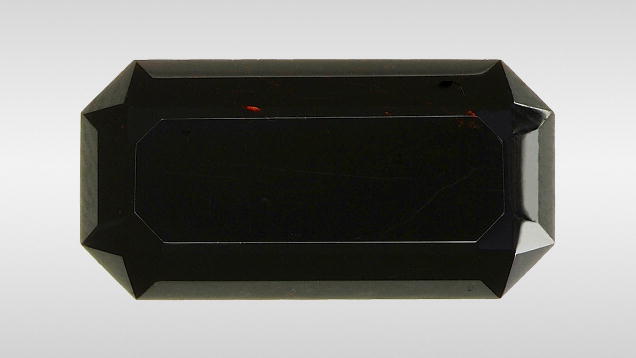Rare Faceted Neptunite


Figure 2. The orangy red neptunite contained dense needles of unknown composition. Field of view: 1.72 mm. Photo by Nathan Renfro.
Neptunite commonly occurs in association with, and as a guest inclusion in, the rare blue mineral benitoite (E.J. Gübelin and J.I. Koivula, Photoatlas of Inclusions in Gemstones, Vol. 1, ABC Edition, Zurich, 1986). Both minerals are Ti-bearing silicates. Benitoite may contain whitish inclusions of crossite (an amphibole) or natrolite (a zeolite), so it is possible that the thin needles in this neptunite are composed of one of these metamorphic minerals. The main source of neptunite is San Benito, California, where it is found along the walls of natrolite veins in blueschist (B. Laurs et al., “Benitoite from the New Idria District, San Benito County, California,” Fall 1997 G&G, pp. 166–187). The type locality for this material is the Narsarsuk pegmatite in Greenland (O.V. Petersen and O. Johnsen, “Mineral species first described from Greenland,” Canadian Mineralogist, Special Publication No. 8, 2005, pp. 76–77). Neptunite crystals have been found in sizes up to a few inches, but they are rarely faceted because of their brittle nature and relative softness (5–6 on the Mohs scale). The few crystals that are faceted usually weigh less than 1 ct, making this large specimen of particular interest. To the best of our knowledge, this is the first faceted neptunite identified by GIA.



